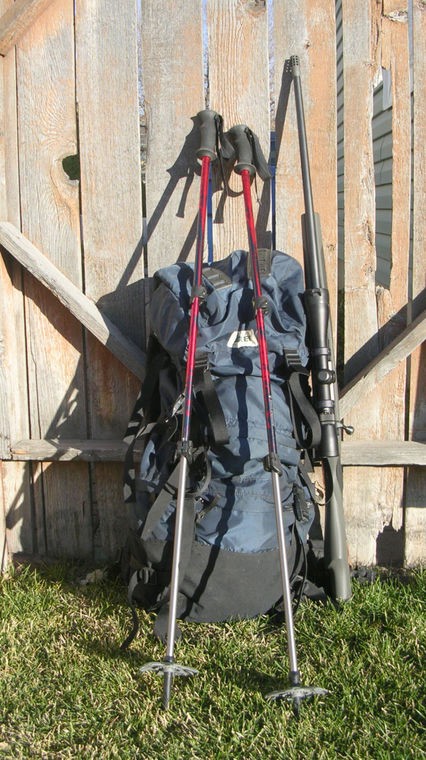Trekking poles have been standard equipment for hikers and backpackers for many years. However, hunters have been slower to take advantage of their benefits.
I’m not sure why hunters didn’t start using trekking poles when hikers, backpackers and campers started using them years ago. Maybe we thought they were just for the elderly or those with disabilities.
I think the reason I was slow to realize the benefits of trekking poles was my early training that the weight of my backpack should rest on my hips, with the heaviest items toward the bottom of the pack so my legs could bare the weight instead of my back. That is still the best way to pack your backpack. But research in exercise technology favors the use of trekking poles for stability and weight distribution when hiking or hunting while wearing a backpack.
Several years ago when my wife was nursing a strained knee joint, we bought her a pair of trekking poles to explore the trails in Yellowstone National Park. After that, I bought a pair of Black Diamond trekking poles that were adjustable to one’s personal needs. I slowly started using them for hunting as I realized they were beneficial to hunters in several ways.
The obvious advantage of trekking poles is safety through better stability as one walks over varied terrain in the mountains. With trekking poles, one has four points of contact with the ground, which improves balance and stability when side hilling, crossing boulder fields or walking over uneven ground.
Another advantage of trekking poles is that weight can be distributed across the entire body instead of just the hips and legs. Muscles and joints are less fatigued after a day of walking around the mountains using trekking poles. That translates into fewer injuries because of falls or physical stress on the body.
Trekking poles, with their wrist straps, can also be hooked together and used as a rest for binoculars, or for eliminating arm fatigue and making a solid platform for glassing the area for game while scouting or hunting. I also use mine as a bipod in order to steady my rifle for a shot, if I can’t see the target in prone position or the shot must be taken at a considerable distance and I want to lay my rifle on a steady rest.
Trekking poles can also be used to stabilize a tent if one of the tent poles is broken or if some additional tent support is needed because of inclement weather.
Trekking poles also can be used to move debris and thick vegetation out of the way while hiking or hunting.
When I am not using my trekking poles, I can shorten them a great deal and attach them to my backpack. I can then detach them and pull them out to the desired length, lock them and have four points of contact when I need more stability.
If you haven’t tried trekking poles, do yourself a favor the next time you go into the backcountry, and borrow or buy a pair of trekking poles and see if you don’t feel less fatigued and better balanced. I’m betting you will feel safer and more stable with four contact points with the ground.
Smokey Merkley was raised in Idaho and has been hunting since he was 10 years old. He was a member of the faculty of Texas A&M University for 25 years. There he taught orienteering, marksmanship, self-defense, fencing, scuba diving and boxing. He was among the first DPS-certified Texas Concealed Handgun Instructors. He can be contacted at mokeydo41245@hotmail.com.



